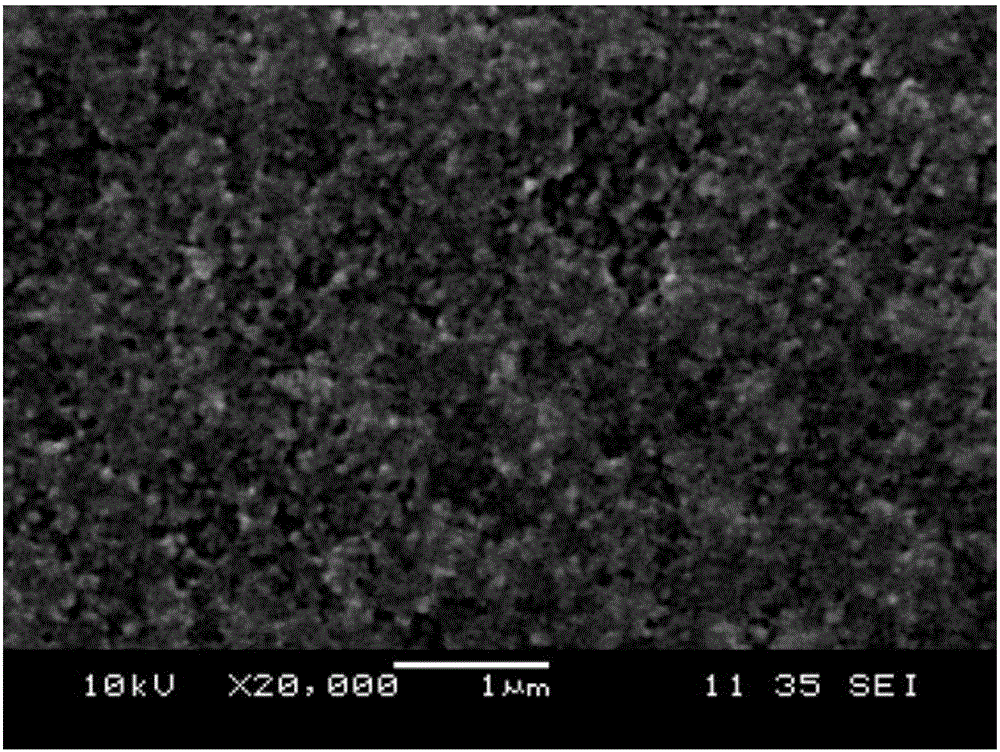Photoelectrochemical sensor, and preparation and application thereof
A photoelectrochemical and sensor technology, which is used in the preparation of photoelectrochemical sensors, the detection of thrombin in human serum, medicines and cosmetics, can solve the problems of poor biocompatibility of photocorrosion toxic heavy metals and unsuitable for thrombin detection, etc. Good photocurrent response, improved photocurrent response, simple operation effect
- Summary
- Abstract
- Description
- Claims
- Application Information
AI Technical Summary
Problems solved by technology
Method used
Image
Examples
Embodiment 1
[0045] A kind of preparation method of photoelectrochemical sensor, such as figure 1 As shown, it mainly includes the following steps:
[0046] (1) Synthesis of carbon quantum dots
[0047] Dissolve 0.735 g of citric acid and 235 μL of ethylenediamine in 7 mL of ultrapure water, and stir vigorously for 10 min. Then the mixed solution was transferred to a 13 mL polytetrafluoroethylene-lined stainless steel autoclave, and the autoclave was placed in an oven at 200° C. for 5 h. After 5 hours, the stainless steel autoclave was taken out, and placed at room temperature to cool naturally. Then the dark brown solution was transferred into a dialysis bag with a molecular cut-off (MWCO) of 1000 and dialyzed for 2-3 days. Concentrate the obtained dialysate with a rotary evaporator, then place the obtained concentrated solution in a vacuum oven at 60° C. for 48 hours, and finally grind the obtained brown-black solid to obtain carbon quantum dot powder. The carbon quantum dot solution...
Embodiment 2
[0065] (1) Synthesis of carbon quantum dots
[0066]Dissolve 0.735 g of citric acid and 235 μL of ethylenediamine in 8 mL of ultrapure water, and stir vigorously for 10 min. Then the mixed solution was transferred to a 13 mL polytetrafluoroethylene-lined stainless steel autoclave, and the autoclave was placed in an oven at 220° C. for 3 h. After 3 hours, the stainless steel autoclave was taken out, and placed at room temperature to cool naturally. Then the dark brown solution was transferred into a dialysis bag with a molecular cut-off (MWCO) of 1000 and dialyzed for 2-3 days. Concentrate the obtained dialysate with a rotary evaporator, then place the obtained concentrated solution in a vacuum oven at 60° C. for 48 hours, and finally grind the obtained brown-black solid to obtain carbon quantum dot powder.
[0067] (2) Synthesis of titanium dioxide nanoparticles
[0068] Take 9 mL of tetrabutyl titanate solution and add it to 40 mL of absolute ethanol, mix and stir evenly, ...
PUM
| Property | Measurement | Unit |
|---|---|---|
| particle diameter | aaaaa | aaaaa |
Abstract
Description
Claims
Application Information
 Login to View More
Login to View More - R&D
- Intellectual Property
- Life Sciences
- Materials
- Tech Scout
- Unparalleled Data Quality
- Higher Quality Content
- 60% Fewer Hallucinations
Browse by: Latest US Patents, China's latest patents, Technical Efficacy Thesaurus, Application Domain, Technology Topic, Popular Technical Reports.
© 2025 PatSnap. All rights reserved.Legal|Privacy policy|Modern Slavery Act Transparency Statement|Sitemap|About US| Contact US: help@patsnap.com



